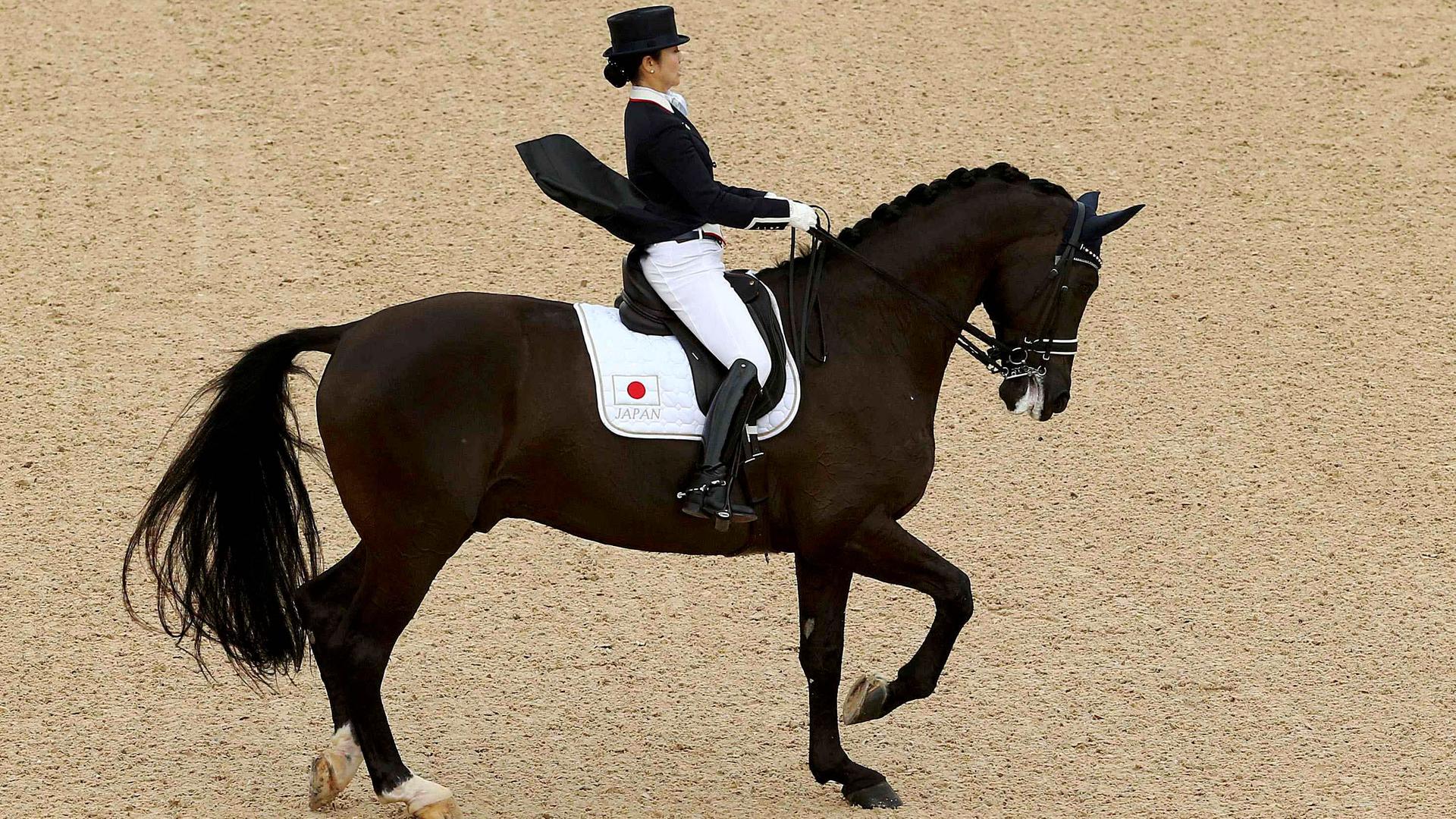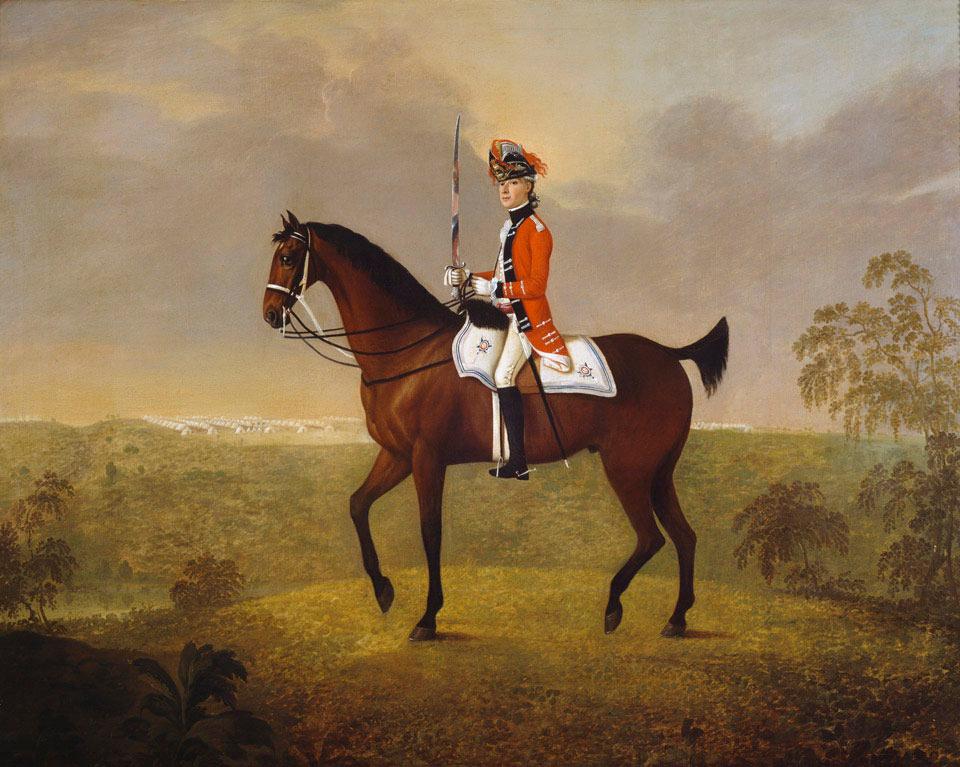Cornet Thomas Boothby Parkyns, 15th (or the King's) Regiment of (Light) Dragoons, 1780.
Imagine seeing tanks driving around as an Olympic sport.
That, in many ways, is the modern-day equivalent of dressage. Yes, dressage, the odd-looking sport with well-dressed men and women prancing around on immaculately groomed horses.
That’s because the dainty and elegant sport of dressage originated in the ancient art of riding and controlling a war-horse.
Through most of history, the horse and its rider have been a weapon of war — like a tank — whose speed, power and maneuverability is far superior to the common foot soldier.
In battle, the ability to move a horse quickly from side to side, or burst into a gallop, or change direction quickly are vital survival skills. The dancing-in-place thing, or “piaffe,” where the hooves paw the ground, may actually have its origins in the need to stomp a fallen enemy.
Dressage riders don’t talk about control, although that’s what it looks like. They prefer to talk about rider and horse working in harmony. The horse is seen as the friend of the rider, trained through kindness. They respond primarily to the rider's legs and weight, rather than whip and spur.
The equestrian arts go back to when people first harnessed horsepower to their advantage. Since those earliest days thousands of years ago, riders have competed with each other in how well they can control a horse.

However, dressage does not appear to have been an event at the ancient Olympics. It first appeared in the modern Olympics in 1912, and back then it was the exclusive preserve of men, predominantly cavalrymen.
But the mechanization of warfare led to the end of mounted soldiers. The US cavalry lost its last mounted combat unit in the 1940s.
At about the same time, women were making inroads into the sport, and were finally allowed to compete in dressage at the Olympics in 1952.
Imagine seeing tanks driving around as an Olympic sport.
That, in many ways, is the modern-day equivalent of dressage. Yes, dressage, the odd-looking sport with well-dressed men and women prancing around on immaculately groomed horses.
That’s because the dainty and elegant sport of dressage originated in the ancient art of riding and controlling a war-horse.
Through most of history, the horse and its rider have been a weapon of war — like a tank — whose speed, power and maneuverability is far superior to the common foot soldier.
In battle, the ability to move a horse quickly from side to side, or burst into a gallop, or change direction quickly are vital survival skills. The dancing-in-place thing, or “piaffe,” where the hooves paw the ground, may actually have its origins in the need to stomp a fallen enemy.
Dressage riders don’t talk about control, although that’s what it looks like. They prefer to talk about rider and horse working in harmony. The horse is seen as the friend of the rider, trained through kindness. They respond primarily to the rider's legs and weight, rather than whip and spur.
The equestrian arts go back to when people first harnessed horsepower to their advantage. Since those earliest days thousands of years ago, riders have competed with each other in how well they can control a horse.

However, dressage does not appear to have been an event at the ancient Olympics. It first appeared in the modern Olympics in 1912, and back then it was the exclusive preserve of men, predominantly cavalrymen.
But the mechanization of warfare led to the end of mounted soldiers. The US cavalry lost its last mounted combat unit in the 1940s.
At about the same time, women were making inroads into the sport, and were finally allowed to compete in dressage at the Olympics in 1952.
The story you just read is not locked behind a paywall because listeners and readers like you generously support our nonprofit newsroom. If you’ve been thinking about making a donation, this is the best time to do it. Your support will get our fundraiser off to a solid start and help keep our newsroom on strong footing. If you believe in our work, will you give today? We need your help now more than ever!
